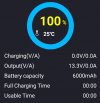winter4w, I would recommend against wiring into your brake lights as many would consider this to be a safety system. In my Audi, I decided to wire a new circuit into the fuse panel to ensure that I did not impede any system, while my approach may be considered extreme, I wanted to be as prudent as possible. I spoke to one of the electrical specialists at my dealer and he also recommended this approach. Also, since many manufacturers employ monitoring systems in the electrical/battery system, I decided to use a Cellink Neo to further isolate the electrical system from regular discharge during parking mode. The nice feature with the Neo is that it uses Bluetooth to communicate with a phone app so that I can observe the voltage and amperage for both the charging and discharge states. If you take your time, my approach is not difficult, and can be accomplished with a $15 12v probe circuit tester, a $30 multi-meter and a good crimp tool/wire stripper.
If you go with fuse taps, a better approach would be to use the cigarette lighter/12v accessory socket fuse for the ACC circuit (only if it is powered with the ignition and assuming you do not use it for other large amperage draw devices) and the interior lights for the BAT circuit. I would also verify in your owners manual that the dash lights are separate from the interior lights. This is also the other benefit of the Cellink Neo, I only needed to create one new circuit for ACC (i.e. ignition on) as the Neo only demands a charging current draw during vehicle operation. If using a fuse tap, only one to an ACC source is required.


